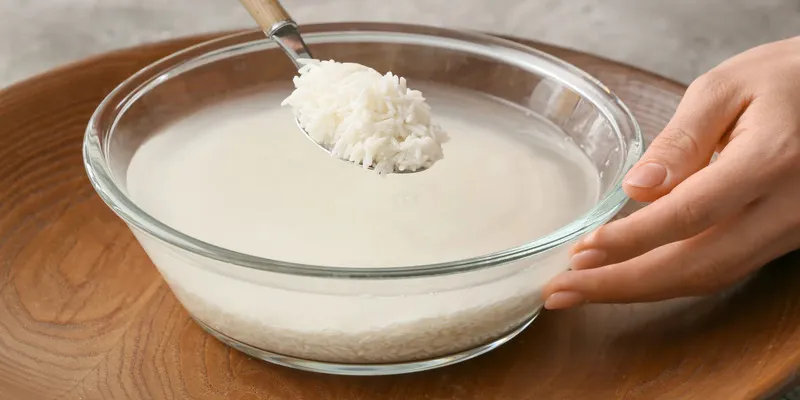What to Know About Cold Water Therapy
Are you looking for a natural way to boost your health and well-being? Cold water therapy might be the invigorating practice you need. From reducing inflammation to improving circulation and mental clarity, the benefits of cold water therapy are numerous. In this article, we explore the science behind this practice, the proper techniques to get started safely, and how to incorporate cold water therapy into your wellness routine. Take the plunge and unlock the rejuvenating power of cold water immersion.
What is Cold Water Therapy?
 Cold
water therapy, also known as cold hydrotherapy or cryotherapy, involves using
water at temperatures around 59°F (15°C) or colder to treat various health
conditions or promote overall well-being. This centuries-old technique has
gained renewed popularity recently due to its potential physical and mental
health benefits.
Cold
water therapy, also known as cold hydrotherapy or cryotherapy, involves using
water at temperatures around 59°F (15°C) or colder to treat various health
conditions or promote overall well-being. This centuries-old technique has
gained renewed popularity recently due to its potential physical and mental
health benefits.
The Fundamentals of Cold Water Therapy
Cold water therapy involves brief exposure to cold temperatures. This can be done through various methods such as:
- Cold showers
- Ice baths
- Cold water immersion in natural bodies of water
The exposure time and frequency vary based on goals and tolerance, with sessions lasting from a few seconds to several minutes.
How It Works
Cold water therapy triggers the body’s inherent stress response. When exposed to cold temperatures, the body reacts by:
- Reducing the diameter of blood vessels
- Increasing heart rate and blood pressure
- Releasing stress hormones such as norepinephrine
Possible Benefits
Advocates claim that cold water therapy can offer several benefits, including improved immune function, enhanced mood and mental clarity, faster recovery from exercise, increased energy and alertness, and better sleep.
The Most Significant Benefits of This Cooling Practice
Improved Circulation and Recovery
Cold water therapy enhances blood circulation. When exposed to cold water, blood vessels constrict, pushing blood to the body’s core and vital organs. Once you warm up, the vessels expand, increasing blood flow. This process can reduce inflammation and accelerate muscle recovery, particularly beneficial for athletes or individuals with physically demanding lifestyles.
Improved Immunity
Consistent cold water exposure can bolster the immune system. Cold shock triggers activity that boosts white blood cells, which fight infections and diseases. This improved circulation also aids in toxin release and lymphatic system clearance, naturally strengthening defenses.
Improved Mental Resilience and Mood
Cold water treatment can significantly impact mood. The sudden shock of cold water releases endorphins and norepinephrine, neurotransmitters that can enhance mood and reduce depression symptoms. Repeated exposure to cold challenges can improve mental resilience, enhancing stress management capabilities.
Weight Management Support
Research suggests cold water therapy may aid weight loss by activating brown fat, a type of fat burned to generate body heat. While more research is needed, incorporating cold water therapy into your regimen can complement other weight loss efforts by slightly boosting resting metabolism.
Methods of Cold Water Therapy
**Progressive Immersion**
First-time cold water therapy practitioners can start with gradual immersion. Slowly expose the feet and legs, then progress to full-body exposure. This approach allows the body to acclimate to temperature changes and minimizes shock. Begin with lukewarm water, gradually transitioning to colder temperatures for comfort.
Contrast Therapy
Contrast therapy involves alternating between hot and cold water exposure to stimulate circulation and reduce inflammation. Start with a warm shower for 3-5 minutes, then switch to cold water for 30 seconds to 1 minute. Repeat this cycle 3-5 times, always ending with cold water. This method aids muscle recovery and improves circulation.
Ice Baths
Ice baths are an extreme form of cold water therapy popular among athletes and those engaging in strenuous physical activities. Fill a tub with cold water and add ice to cool it to 50-59°F (10-15°C). Immerse yourself up to your neck for 10-15 minutes, practicing deep breathing to overcome initial shock. Use a timer, and never attempt this alone. Start with shorter durations and gradually increase time as your body acclimates.
Cold Showers
Cold showers offer an accessible way to incorporate cold water therapy into your lifestyle. Begin with warm water, then gradually decrease the temperature to a comfortable coolness over 2-3 minutes. Take deep, controlled breaths under the cold water for at least 30 seconds. With practice, gradually increase time and decrease temperature.
Possible Risks and Precautions in Cold Water Therapy
While cold water therapy can be effective, it’s important to be aware of potential risks and precautions. Understanding these factors ensures safer conditions and maximizes the benefits of this practice.
Medical Considerations
Cold water immersion can be stressful on the body. Individuals with certain medical conditions should exercise caution and consult a physician before starting cold water therapy. Individuals with:
- Heart conditions
- High blood pressure
- Poor circulation
- Raynaud’s disease
Always consult your healthcare professional before beginning any new therapy, especially if you have related health concerns.
Cold Shock Response
The most significant risk of cold water immersion is cold shock, an involuntary reflex that can cause:
- Rapid breathing or hyperventilation
- Increased heart rate
- Temporary muscle loss
To mitigate these risks, gradually acclimate to cold water and avoid training alone, especially as a beginner.
Prevention of Hypothermia
Prolonged exposure to cold water can lead to hypothermia, a dangerous drop in core body temperature. To prevent this, follow these guidelines:
- Limit initial sessions to 1-3 minutes
- Gradually increase exposure as your body adapts
- Keep warm, dry clothes nearby
Monitor your body’s reaction and exit the water if you experience extreme distress or shivering.
Guidelines for Safe Practice
Follow these guidelines for safe cold water therapy:
- Avoid therapy if under the influence of certain medications
- Refrain from cold water immersion when ill or overly fatigued
- Wear protective neoprene gloves, boots, etc., for skin protection
- Inform someone of your location and companions during therapy
Conclusion
Cold water therapy offers potential benefits for physical and mental well- being. While more research is needed, many find it invigorating, reporting improved recovery, mood, and immune function. If you decide to try cold water immersion, proceed gradually and listen to your body’s signals.




